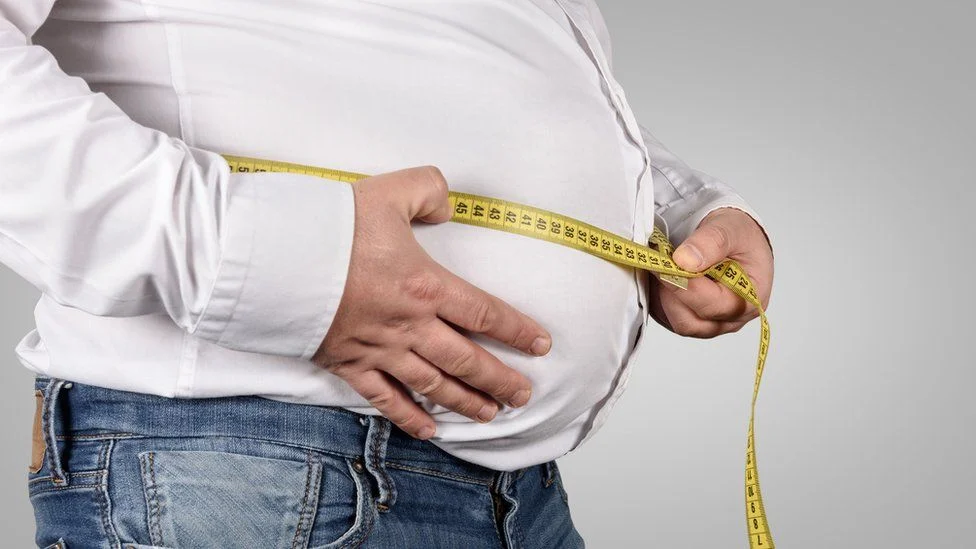
Srinagar: The fifth and latest round of the National Family Health Survey (NFHS) has flagged a worrying increase in the percentage of obesity and overweight across gender groups, particularly among men in the erstwhile state of J&K as the percentage of such cases worsened in the past half a decade.
Pertinently, several of J&K’s nutritional indicators have also worsened since the fourth round of the NFHS, which was held in 2015-16. But the erstwhile state has hit a major demographic milestone when the percentage of obesity and Blood pressure in J&K increased at a vicious average among both men and women, according to the latest survey conducted by the Ministry of Health and Family Welfare between 2019 and 2021.
Notably, the silent epidemic of obesity among men is sweeping the erstwhile state and the future looks tense as more men in J&K are suffering through obesity that has increased with a worrying average of 11 percent. The National Family Health Survey – 5 has dropped this big health alert for J&K.
The data in NFHS 2019-21, the fifth in the series, show that among all age groups, the highest spike in obesity was reported among men who are either overweight or obese where the obesity percentage was recorded at 31.6 percent in NFHS-5 report from 20.5 percent in NFHS-4, 2015-16 report.
The data show that the number was higher in urban J&K where the rate stood at 40.8 per cent compared to rural J&K where the rate was recorded at 28.2 percent.
For women who are overweight or obese (BMI ≥25.0 kg/m2), the rate was recorded at 29.3 percent in NFHS-5 that has maintained a same rate what was recorded in NFHS-4. In urban J&K, the rate of 33.4 percent was higher than rural J&K where the rate was 27.9 percent.
This is followed by the category of “Men who have high risk waist-to-hip ratio (≥0.90) (%)” where the percentage was recorded at gruelling 60.7 percent. In this group, too, the number was higher in urban areas where the percentage stood at 66 percent compared to rural J&K where the rate was recorded in the fifth edition of the NFHS series.
As per NFHS-5 report, in the category of “Women who have high risk waist-to-hip ratio (≥0.85) (%)” the rate was much higher compared to men as the percentage for women was recorded at 87.8 percent. In this category, the rate was higher in Urban J&K where the percentage settled at 89.2 percent compared to rural J&K 87.3 percent.
The report has further revealed that Women whose Body Mass Index (BMI) is below normal has decreased by 7 percent from 12.2 percent in NFHS-4 to 5.2 percent in NFHS-5. For this category, the rate was higher in rural J&K where the percentage was recorded at 5.8 percent in NFHS-5 compared to 3.7 percent in urban J&K.
The NFHS-5 survey has further revealed that Men whose Body Mass Index (BMI) is below normal has also decreased in the past half a decade as the new rate in NFHS-5 was recorded at 4.3 percent compared to gruelling 11 percent in NFHS-4 survey. In this category, the rate was higher in rural areas where the percentage was recorded at 5.0 percent compared to 2.5 percent in NFHS-4.
The Government of India on November 24 released the factsheets of key indicators on population, reproductive and child health, family welfare, nutrition and others for India including J&K, clubbed under phase two of the 2019-21 NFHS-5.
It is pertinent to mention here that the NFHS-5 fieldwork for Jammu & Kashmir was conducted from July 1, 2019 to January 30, 2020 and the Information was gathered from 18,086 households, 23,037 women, and 3,087 men.
Notably, as per NFHS-5 report, anaemia rose at an average of 3 percent across age groups in NFHS-5 when compared to NFHS-4 at the National level of India.
Follow this link to join our WhatsApp group: Join Now
Be Part of Quality Journalism |
Quality journalism takes a lot of time, money and hard work to produce and despite all the hardships we still do it. Our reporters and editors are working overtime in Kashmir and beyond to cover what you care about, break big stories, and expose injustices that can change lives. Today more people are reading Kashmir Observer than ever, but only a handful are paying while advertising revenues are falling fast. |
| ACT NOW |
| MONTHLY | Rs 100 | |
| YEARLY | Rs 1000 | |
| LIFETIME | Rs 10000 | |











